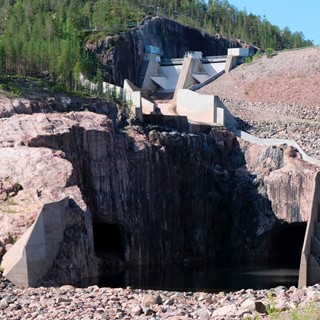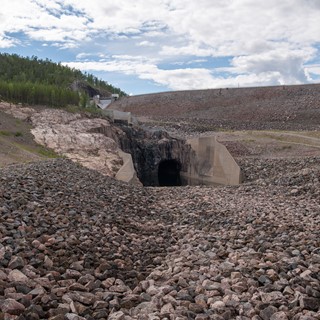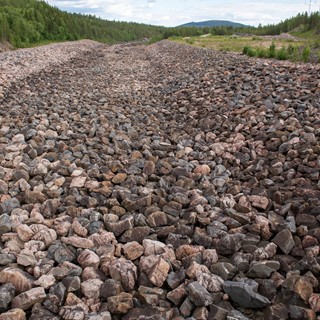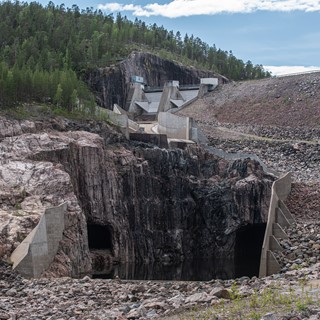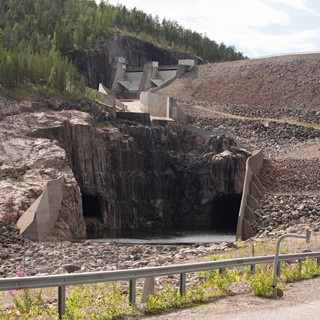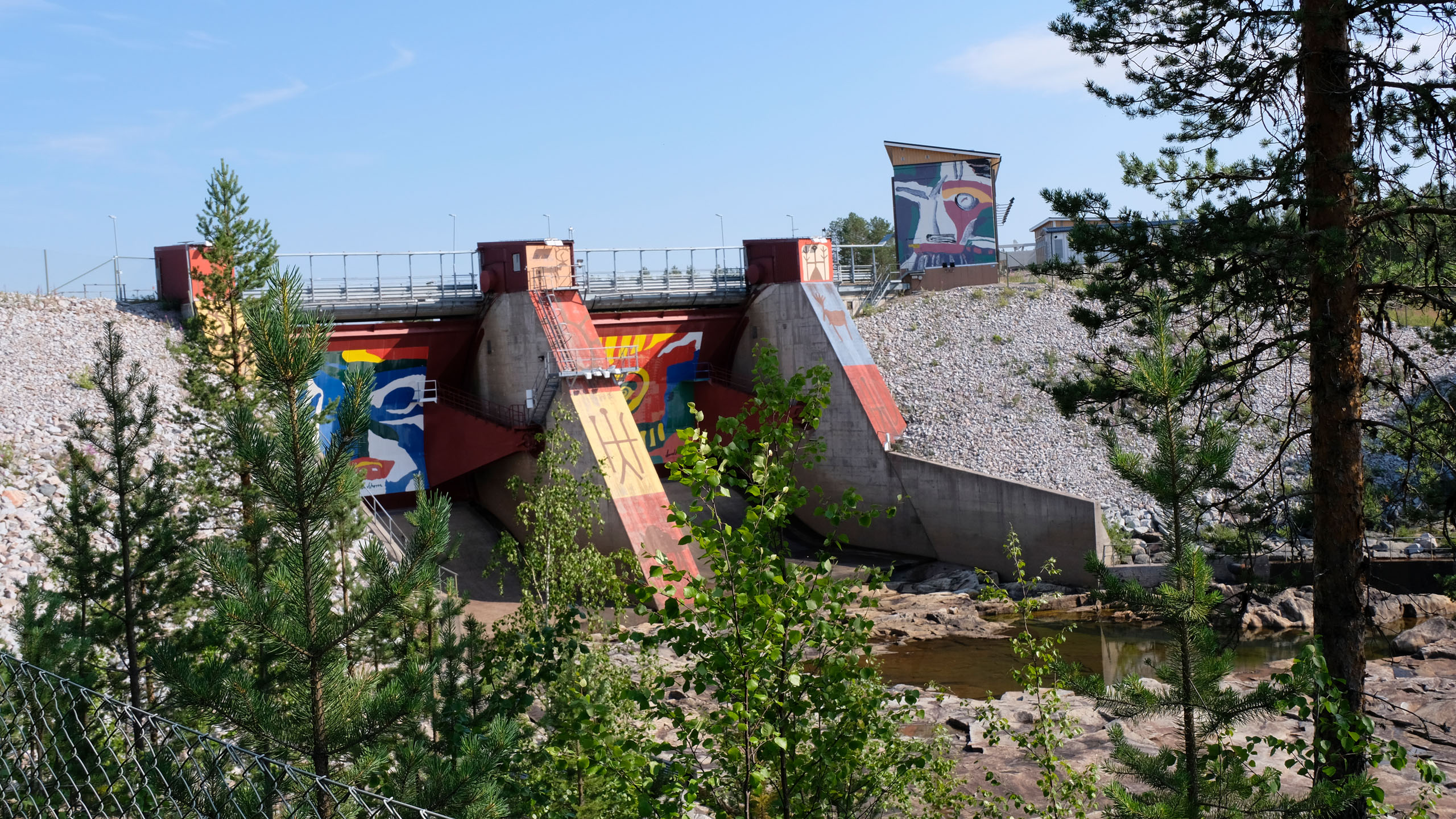History
Letsi’s power plant is located 16 kilometres above where the Lesser Lule Älv joins the Greater Lule Älv. The power plant was the first one to be built in the Lesser Lule Älv, in 1960 – 1967. Letsi was equipped with three penstocks that led water down to the turbines through a joint tunnel. The dam that crosses the river is made of rock and soil, is 85 metres tall, 520 metres long, and creates a 30-kilometre long regulation reservoir that reaches as far as the town of Jokkmokk.
Letsi’s power plant utilises the head from the Rivers Letsiforsen and Pukkiforsen. For the water to be used by the power plant in Porsi as well, a six-kilometre tunnel from Letsi’s power plant was built, leading into Suoksjokk in the Greater Lule Älv above Porsi’s power plant.
The machine room in Letsi is located 136 metres below ground so it can use the equivalent head. Letsi’s power plant was originally built with two power generation units, but in the 1970s, the power plant was expanded by a third power generation unit, and thus became Sweden’s biggest hydropower plant at the time, with a power output of 420 MW.
At most, 500 people worked on construction in Letsi, during a time when cars were a big part of society. This meant that the need for family homes in the construction villages was lower. No homes were built in Letsi, close to the workplace, as most of the workers lived in Vuollerim. Four so-called bachelors’ facilities were constructed, however.
The power plant in Letsi is different in that it has an enormous dry bed downstream from the power plant. The 17-kilometre dry bed is often called the longest in Europe, and local environmental organisations work with the issue of releasing water back in to recreate ecological and social sustainability in the area.
Images
All pictures below are part of the power plant's history. All images are copyrighted. You may use the images for personal use but the images may not be used in commercial contexts or printed matter without our permission. Click on the pictures to enlarge them.
Stories
Here you can read other people's stories about the power plant. And if you have your own story, please share it. Whether you want it to be published on the site or not, we are interested in all stories.
Do you have a story about the powerplant or life around the river?
Send us your story
